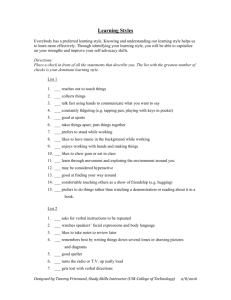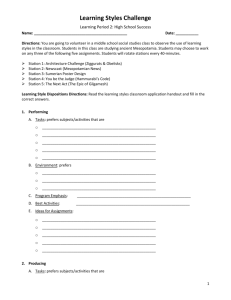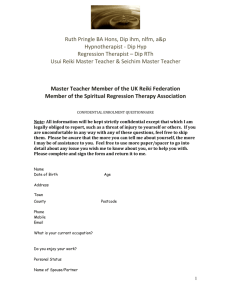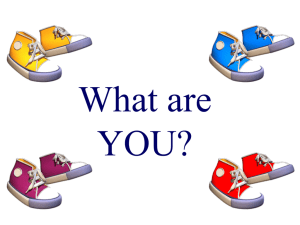to use this exercise that will guide you through the Birkman Method
advertisement
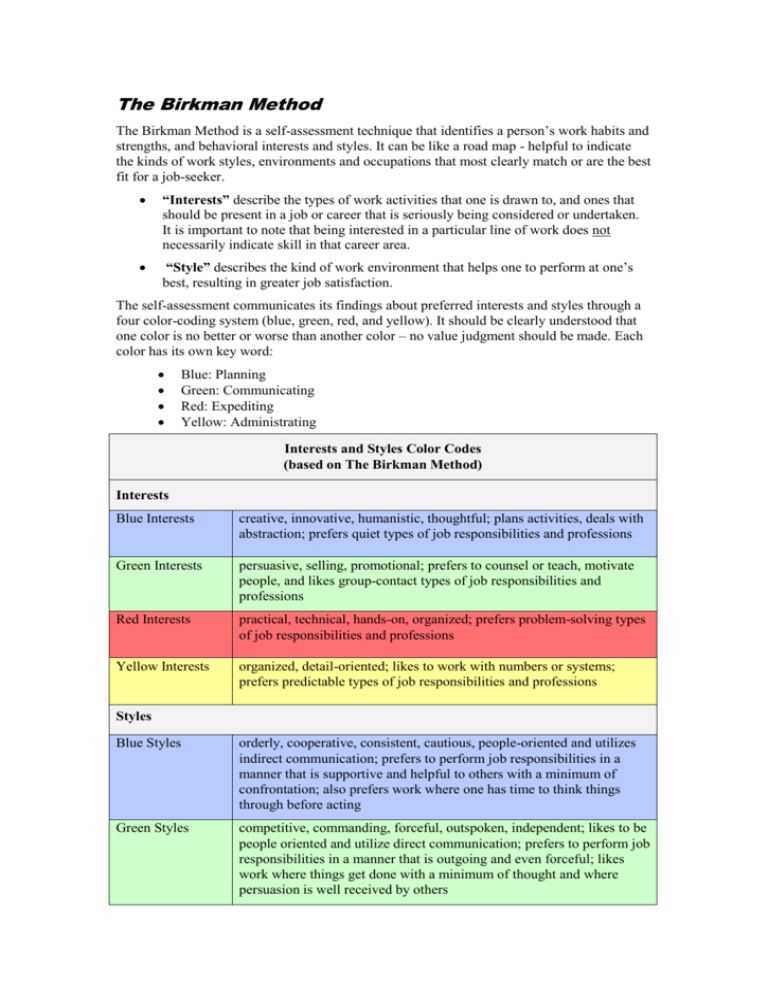
The Birkman Method The Birkman Method is a self-assessment technique that identifies a person’s work habits and strengths, and behavioral interests and styles. It can be like a road map - helpful to indicate the kinds of work styles, environments and occupations that most clearly match or are the best fit for a job-seeker. “Interests” describe the types of work activities that one is drawn to, and ones that should be present in a job or career that is seriously being considered or undertaken. It is important to note that being interested in a particular line of work does not necessarily indicate skill in that career area. “Style” describes the kind of work environment that helps one to perform at one’s best, resulting in greater job satisfaction. The self-assessment communicates its findings about preferred interests and styles through a four color-coding system (blue, green, red, and yellow). It should be clearly understood that one color is no better or worse than another color – no value judgment should be made. Each color has its own key word: Blue: Planning Green: Communicating Red: Expediting Yellow: Administrating Interests and Styles Color Codes (based on The Birkman Method) Interests Blue Interests creative, innovative, humanistic, thoughtful; plans activities, deals with abstraction; prefers quiet types of job responsibilities and professions Green Interests persuasive, selling, promotional; prefers to counsel or teach, motivate people, and likes group-contact types of job responsibilities and professions Red Interests practical, technical, hands-on, organized; prefers problem-solving types of job responsibilities and professions Yellow Interests organized, detail-oriented; likes to work with numbers or systems; prefers predictable types of job responsibilities and professions Styles Blue Styles orderly, cooperative, consistent, cautious, people-oriented and utilizes indirect communication; prefers to perform job responsibilities in a manner that is supportive and helpful to others with a minimum of confrontation; also prefers work where one has time to think things through before acting Green Styles competitive, commanding, forceful, outspoken, independent; likes to be people oriented and utilize direct communication; prefers to perform job responsibilities in a manner that is outgoing and even forceful; likes work where things get done with a minimum of thought and where persuasion is well received by others Red Styles task-oriented and likes to utilize direct communication; prefers to perform job responsibilities in a manner that is action-oriented and practical; likes work where things happen quickly and results are seen immediately Yellow Styles sociable, task oriented and likes to utilize indirect communication; prefers to perform job responsibilities in a manner that is orderly and planned to meet a known schedule; likes work where things get done with a minimum of interruption and unexpected change Exercise 1.1: Complete a Simple Inventory of Personal Interests and Style Look at the color-coded chart above and take a guess at what you believe your color codes will be for career interest and job style. Answer this BEFORE taking the Career Quiz I think my career interest color will be: I think my job style color will be: Next, go to the web site below and take the Princeton Review Career Quiz. The results are given in terms of color-coded responses based on The Birkman Method (described earlier). Record your results in the chart below after taking the quiz. The Princeton Review Career Quiz http://www.princetonreview.com/cte/quiz/career_quiz2.asp This is an online survey composed of 24 forced-choice, paired questions that can easily be answered in about 5 minutes. The results provide a general description, based on color, of the student's interests, skills, and preferred style – all important items that will help students think about future careers. Answer this AFTER taking the Career Quiz My career interest color is: My job style color is: Compare your results. Were your color codes for interest and style the same as you believed they would be? If they are different, why do you think that happened?
